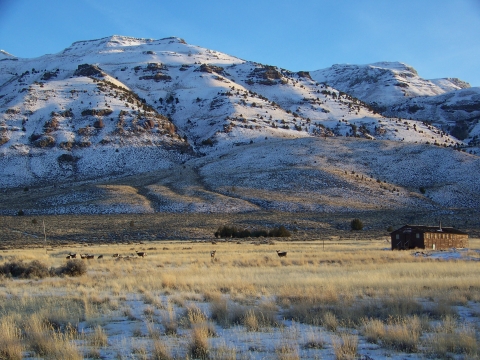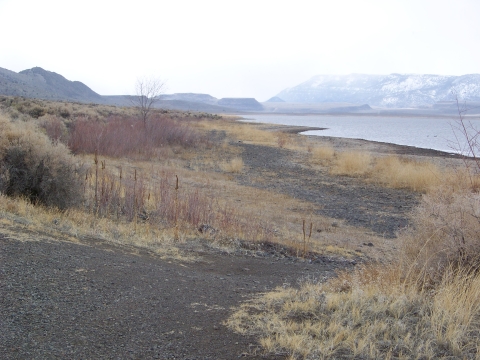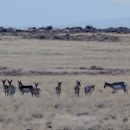About Us
Hart Mountain National Antelope Refuge was established on December 20th, 1936 by President Franklin D. Roosevelt to serve “…as a range and breeding ground for the antelope and other species of wildlife…” Today, management of the Refuge has broadened to include conservation of all wildlife species characteristic of this high desert habitat and restoration of native ecosystems for the public’s enjoyment, education, and appreciation.
Hart Mountain National Antelope Refuge is located in southcentral Oregon on a massive fault block ridge that ascends abruptly nearly three-quarters of a mile above the Warner Valley floor in a series of rugged cliffs, steep slopes, and knife-like ridges. The highest point being Warner Peak, with an elevation of 8,017 feet and the lowest elevation being 4,470 feet, near the edge of Bluejoint Lake at the base of Poker Jim Ridge. Visitors experience spectacular views of the beautiful Warner Valley Wetlands while ascending the west side entrance road to headquarters. The west face of the mountain is cut by several deep gorges. Hart, Potter, and DeGarmo canyons, the most rugged, extend from the valley floor to the top of the main ridge. The east side of the mountain is less precipitous, descending in a series of rolling hills and low ridges to the sagebrush sagebrush
The western United States’ sagebrush country encompasses over 175 million acres of public and private lands. The sagebrush landscape provides many benefits to our rural economies and communities, and it serves as crucial habitat for a diversity of wildlife, including the iconic greater sage-grouse and over 350 other species.
Learn more about sagebrush -grasslands typical of southeastern Oregon and the Great Basin.
The rugged diversity of the terrain creates a rich mix of habitat types, home to more than 300 species of wildlife. Featured species include pronghorn antelope, California bighorn sheep, mule deer, greater sage-grouse, and redband trout. The 278,000-acre refuge is one of the most expansive wildlife habitats in the arid West free of domestic livestock.
Learn more about the pronghorn, the fastest animal in North America, here: Providing a Home for the Fastest Land Mammal in North America
Our Mission
The mission of the National Wildlife Refuge System is to administer a national network of lands and waters for the conservation, management and, where appropriate, restoration of the fish, wildlife and plant resources and their habitats within the United States for the benefit of present and future generations of Americans.
Our History
Hart Mountain National Antelope Refuge was established on December 20th, 1936 by President Franklin D. Roosevelt to serve “…as a range and breeding ground for the antelope and other species of wildlife…”
Other Facilities in this Complex
Hart Mountain National Antelope Refuge is managed as part of the Sheldon-Hart Mountain National Wildlife Refuge Complex. You may also be interested in visiting Sheldon National Wildlife Refuge in Nevada!
A National Wildlife Refuge Complex is an administrative grouping of two or more refuges, wildlife management areas or other refuge conservation areas that are primarily managed from a central office location. Refuges are grouped into a complex structure because they occur in a similar ecological region, such as a watershed or specific habitat type, and have a related purpose and management needs. Typically, a project leader or complex manager oversees the general management of all refuges within the complex and refuge managers are responsible for operations at specific refuges. Supporting staff, composed of administrative, law enforcement, refuge manager, biological, fire, visitor services, and maintenance professionals, are centrally located and support all refuges within the complex.



